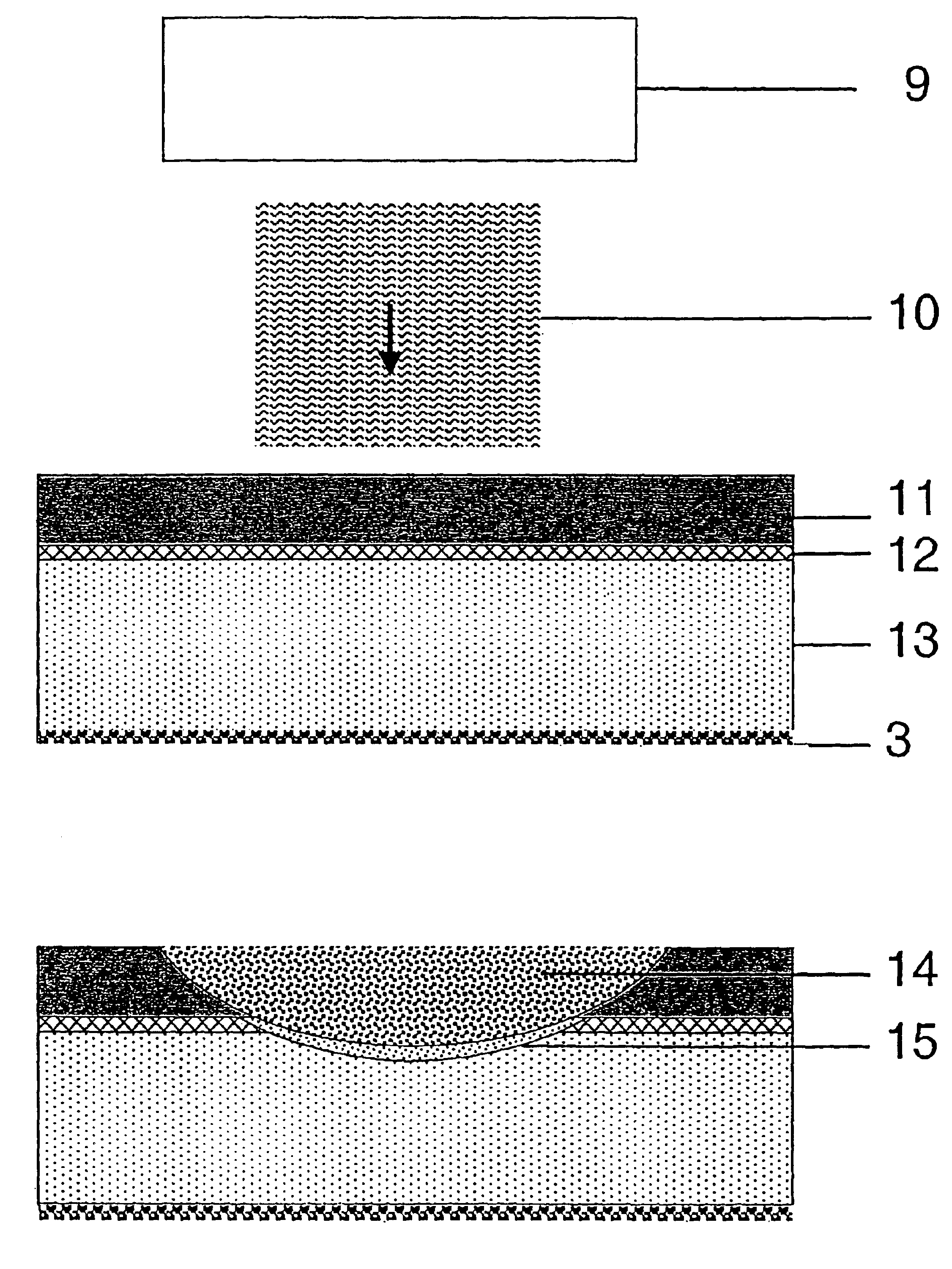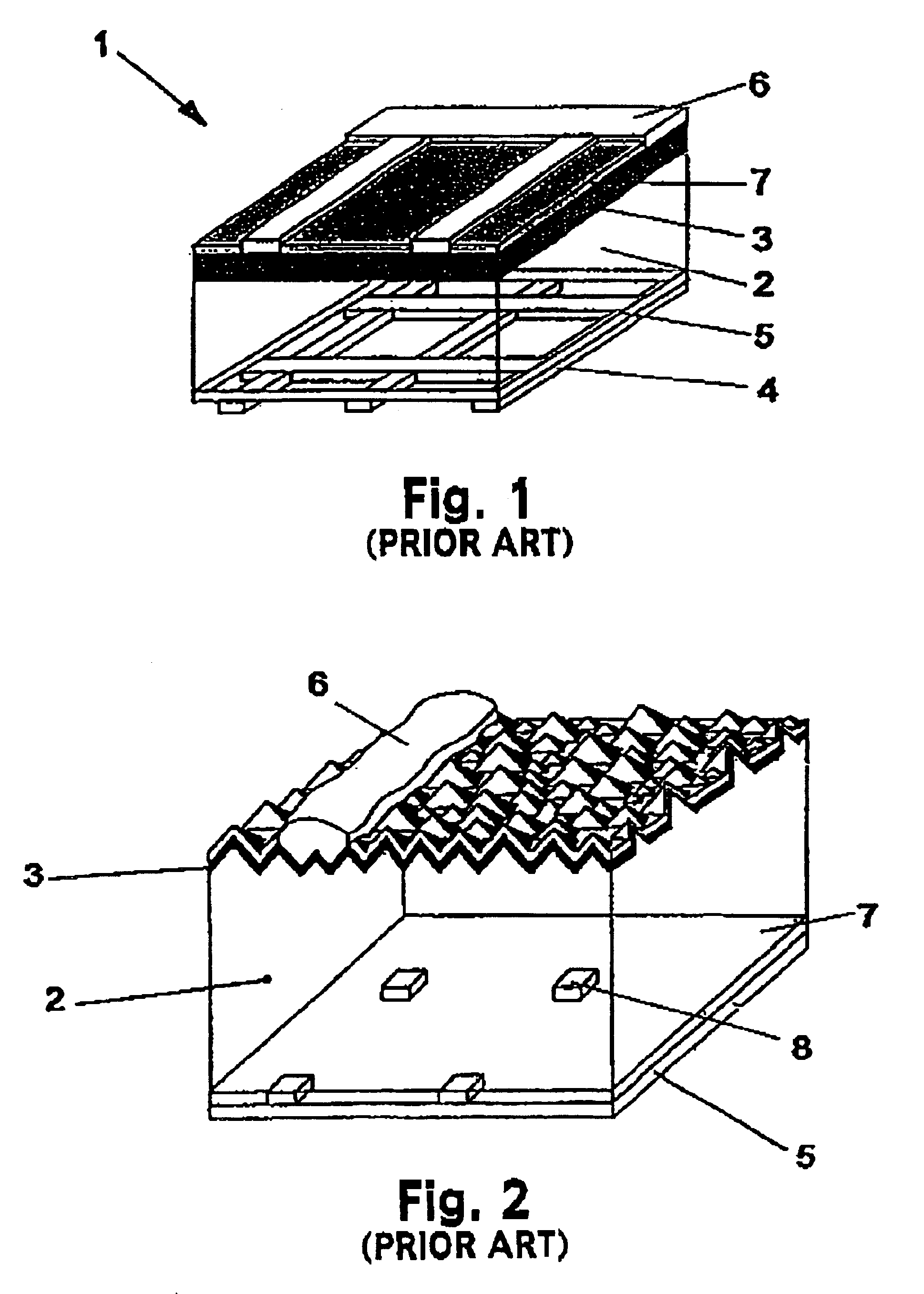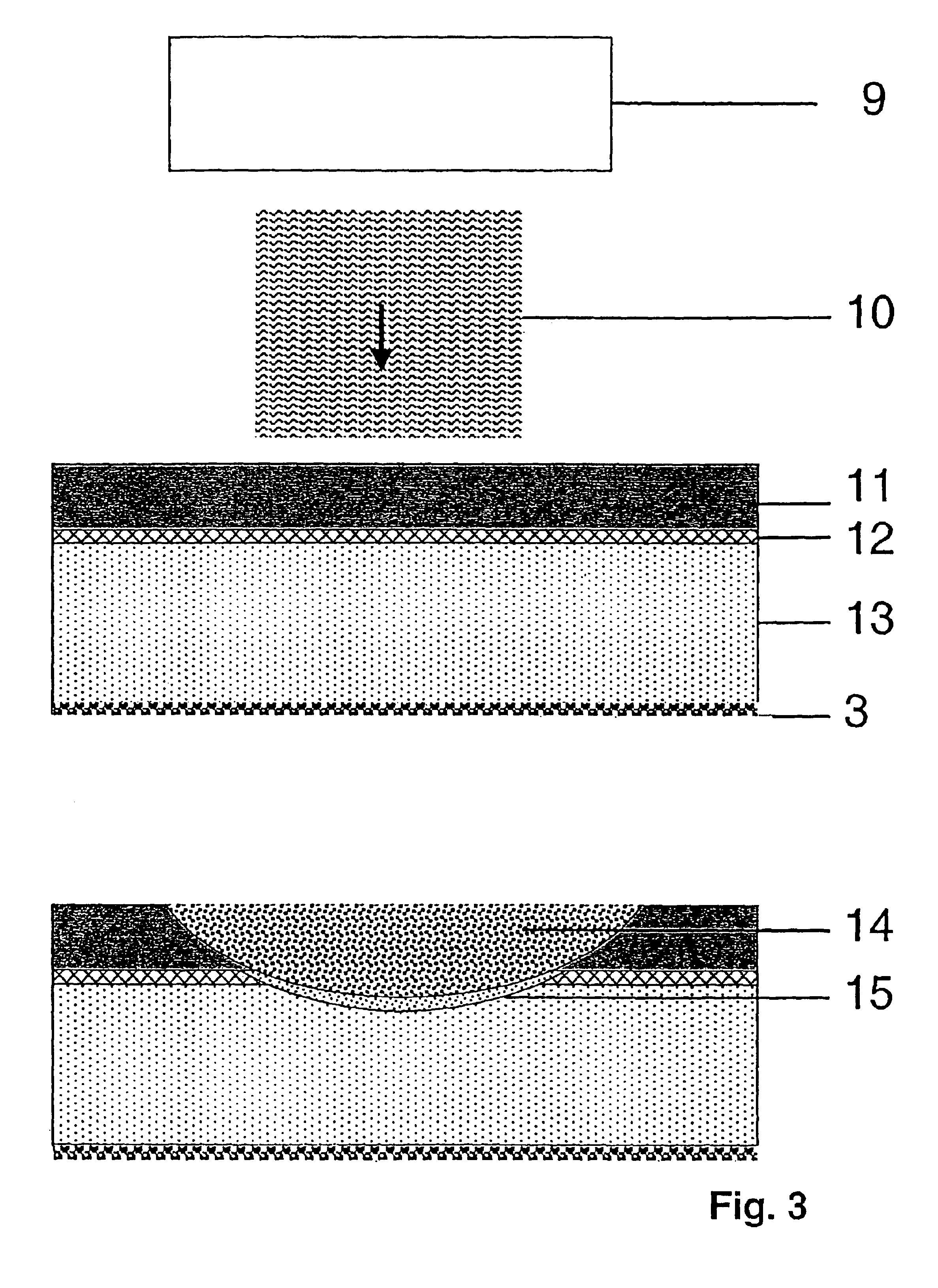Method of producing a semiconductor-metal contact through a dielectric layer
a dielectric layer and metal contact technology, applied in the direction of semiconductor/solid-state device manufacturing, photovoltaic energy generation, electrical apparatus, etc., can solve the problems of reducing the efficiency of photolithography, increasing the probability of recombination within the solar cell layer, and comparatively high cost of photolithography. , the problem of not being applied in the industrial field of solar cell manufacturing,
- Summary
- Abstract
- Description
- Claims
- Application Information
AI Technical Summary
Benefits of technology
Problems solved by technology
Method used
Image
Examples
Embodiment Construction
[0030]The present invention is therefore based on the problem of improving a method of electrically contacting a surface to be electrically contacted and coated with at least one dielectric layer, particularly for contacting the base layer of a solar cell, which is coated with a dielectric passivation layer, in such a way that the disadvantages occurring in prior art and set out in the foregoing may be circumvented. In particular, the manufacture of efficient solar cells at an industrial scale should be possible, which satisfies, on the one hand, the high demands for the achievement of high efficiency ratios, and, on the other hand, favors production of solar cells at the most expedient price possible. Overheating of the material regions not to be contacted, damage to the semiconductor material to be contacted or to the dielectric coating surrounding the contact area, as well as contamination during the contact forming operation should be avoided completely. Moreover, it is an objec...
PUM
| Property | Measurement | Unit |
|---|---|---|
| thickness | aaaaa | aaaaa |
| thickness | aaaaa | aaaaa |
| thickness | aaaaa | aaaaa |
Abstract
Description
Claims
Application Information
 Login to View More
Login to View More - R&D
- Intellectual Property
- Life Sciences
- Materials
- Tech Scout
- Unparalleled Data Quality
- Higher Quality Content
- 60% Fewer Hallucinations
Browse by: Latest US Patents, China's latest patents, Technical Efficacy Thesaurus, Application Domain, Technology Topic, Popular Technical Reports.
© 2025 PatSnap. All rights reserved.Legal|Privacy policy|Modern Slavery Act Transparency Statement|Sitemap|About US| Contact US: help@patsnap.com



